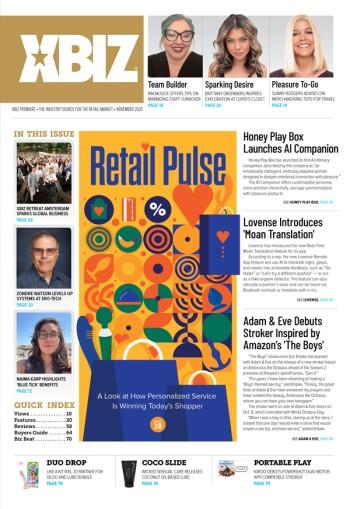This article will separate the men from the boys, and for those of you who really want to know how to make a million dollars in this or any other business, here's the first step. You are always asking about 'the secrets to success' — well here's the big 'numero uno:' have a business plan!
In The Beginning:
Once upon a time, way on back in 1986, I started my first company, 'Special Moments Video.' So began my days as an entrepreneur: working as a professional wedding and event photo / videographer. Having always believed in the power of planning, I researched everything there was to know about being an entrepreneur, and came to the nearly instant conclusion that mainstream business schools (in the 1980's) were fabulous at preparing one for a life in a cubicle at IBM, but left much to be desired as far as preparing oneself for a small business startup and its ongoing operational success.
Being 'a real life nephew of my Uncle Sam' I turned to the US Small Business Administration and said "help!" In short order I was referred to the Small Business Development Center (S.B.D.C.) at the University of New Hampshire, where I was then placed into the capable hands of S.C.O.R.E. (Service Core of Retired Executives). S.C.O.R.E. provides free, expert 1-on-1 assistance to budding entrepreneurs through professional mentors with a wealth of experience, wisdom, and contacts within the business community. I was assigned Leo St. Cyr, a former Vice President of Monsanto Chemical, as my mentor.
Leo was in his eighties, but still had a youthful twinkle in his eye, and was a no-nonsense, professional type. Sitting me down, he asked me what the 'secret to success in business' was. 'If I knew, I wouldn't be here.' "You've got to have a plan" he said, and passing me a notepad and pen, said "Here, write this all down:" Taking a sheet of paper from his files, he began to dictate, and I began to write:
Executive Summary
This is a one to two page highlight of key ideas/plans in business plan. The summary should interest a reader in the business concept and entice him to read the full plan. Although the Executive Summary appears first in the final document, it will be written last.
Description of Business
This section should give a brief history of the business:
1. What is the business name?
2. How is the business organized (sole proprietorship, partnership, corporation)?
3. Who are the business owners?
4. How long has the business been organized?
Description of Product or Service
It is critical to give a clear and concise description of the product made, or the services offered. This section should be written in layman's terms — technical information can be attached in the appendix. You should emphasize the benefits your solution offers to your target market.
1. What does the business sell?
2. What are the features and benefits of the product or service?
3. What solution does the business offer to the marketplace?
4. Describe your pricing.
Marketing Plan
The marketing plan should include a review of current industry conditions, a precise definition of the target markets, an analysis of competitor advantages and weaknesses, plus a plan for promoting and selling your product or service.
Industry
Describe the state-of-affairs within your industry:
1. What industry does your business represent?
2. What are the industry conditions (expanding, declining, new, mature, etc....)
3. How do businesses typically enter the industry?
Customers
In this next section write a clear description of your target market, and include their basic needs and wants. Your product or service should offer a solution to the target market, or provide a benefit to your customer.
1. Who are the customers? (for Individuals, what is their typical age, gender, socio-economic characteristics. For Corporations, what is their typical size, industry segment, growth, etc...)
2. What do your potential customers need or want?
3. Where are your potential customers located?
4. How does your product or service satisfy your customer's needs?
Competition
This section identifies competitors providing the same or similar solution to your target market. For each competitor, you should define strengths and weaknesses and in conclusion define how you will position your business in the market with the established firms. Do not assume that you have NO competitors. Somehow, someway, your target market is using a product or service that meets the need you aim to satisfy.
1. Where do potential customers currently buy the product or service you offer?
2. Who else offers the same or similar product or service you offer?
3. What are the strengths and weaknesses of your competitors?
4. How will your business be positioned regarding these competitors?
Advertising
In this section, you should define how you plan on getting your product or services to your target market. This includes marketing avenues like advertising, promotions, public relations, and distribution channels.
1. How will you reach your customers?
2. How do your target customers make their buying decisions?
3. Where do your target customers shop for products or services?
4. How will you incorporate a variety of marketing efforts? (Trade shows, advertisements, direct mail, directories, phone books, periodicals, coop advertising, marketing/sales reps, etc...)
5. How will you measure the success of your advertising and promotion efforts?
Location
1. Where is your business located? (home-based; retail; commercial, etc:.)
2. Is the location of your business important?
3. Does your business require special zoning, or building improvements?
4. If location is important, what are the features of your location?
Failing to plan is planning to Fail, and if you can't take your business seriously enough to do this, then no one else will take it seriously either.
Suppliers, Raw Materials & Sub-Contractors
If you are producing a product or if you depend on subcontractors to deliver a service, you should know how to contact these sources. In this section you will list your critical suppliers and subcontractors.
1. What materials or services are required to complete production?
2. Where do you get your raw materials?
3. Will you rely on subcontractors to complete a project? If so, who and in what function?
4. How do you find potential suppliers or subcontractors?
Management Team
It is important to know what resources you have in-house to support business development and growth and what resources you will need to find. In this section you should demonstrate that your management team has the technical abilities, marketing abilities, and the necessary business acumen to succeed. In addition, you should identify those directors and advisors who you will consult with.
1. What background does the management team have? (Industry and management experience)
2. What is the make-up of the board of directors or advisors?
3. What key staff positions need to be filled?
4. How many employees will you start with?
5. Who is your Accountant?
6. Who is your Attorney?
7. Who is your Banker?
8. Who is your Insurance Agent?
9. Who are your Consultants?
Financial Planning
This section should include your past financials and future projections, based on sound and reasonable assumptions. If the business plan is being presented for financing, the source and use of funds should be defined here.
1. How much capital is needed to start or expand the business?
2. How much capital can be raised by owners?
3. How much additional capital is needed?
4. What is the capital needed for?
5. Provide historical financial statements
6. Provide Financial projections
When he finished, I was dizzy and completely overwhelmed by all of this. I asked Leo if this was all really necessary, after all, I was just one guy with a camera: He said to me: "Failing to plan is planning to Fail, and if you can't take your business seriously enough to do this, then no one else will take it seriously either." These many years later, I still have a collection of my oldest business documents, including the faded page that I first wrote the above words on to...
I pass this on to you now, and hope that at least one person benefits from this, and makes their first million because of it. When you do, pass it on, and help another successful businessman get his start the right way:







